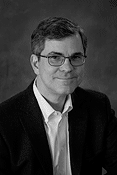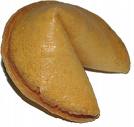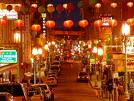It’s nice being married to your research assistant. It makes location work so much easier, especially when that location is a place like San Francisco.
A couple of weeks ago Mrs. B and I took a trip to the City by the Bay. I am working on a thriller that takes place largely in SF. This is not an easy thing for a Dodgers fan to do, but hey, this is my job. Unfortunately, during our two-day stay, the Dodgers managed to drop two games to the Giants, both by one run and after having the lead…not that I noticed, you understand.
Anyway, these are the steps I take to do my location research: Prepare. Go. Observe. Record. Integrate.
1. Prepare
Before the trip itself, I completed the San Francisco scenes to the best of my ability. I used Google Earth and Maps, and did general research on the internet to get as many details right as I could. It’s amazing how much we can do online these days. But I’m still of the opinion that there’s nothing like being on location, walking around, taking in the vibe, the sights, the sounds and yes, even the smells.
Then I got a city map and circled in red the key locales in my story. Thus, I knew the places I wanted to go before I got there.
2. Go
On our first full day in the city, it was a simple matter of setting out with my trusty assistant and following my map with the circles.
We were staying at The Hotel Drisco in Pacific Heights (a key location in the book). Our day started with us driving through The Presidio, and along the west edge of the city until we got to Golden Gate Park. Then we cut back across town.
We stopped where Van Ness meets 18th Street. This is another location in my novel.
3. Observe
We got out and just started walking around, looking at the buildings and the storefronts, and for little passageways I hoped were there. They were. Always nice to find out a location works like you’ve seen it in your imagination. I even found a building that could serve as the one I’d made up for my story. And here it is:
Next stop, Pier 40, over on the east side of the city. This is the spot where my Lead meets a stranger who is going to take him on a nighttime boat ride. I knew from my research that you could see AT&T Park from the pier. I just didn’t realize how close. Being on the spot brought more vivid details for my eventual use.
We next drove over to North Beach, which has three spots I’m using in my story. We parked right in front of one of them, a church, then strolled over to Columbus Avenue for a sidewalk café lunch (research assistants have to be fed). But even this was an opportunity. I like to watch people walk by, look at their faces, try to imagine what their lives are like. I jotted some notes in between bites of my prime rib panini.
After lunch we walked around the neighborhood (which the city fathers had the unmitigated gall to place UPHILL) and took several pics. Walking around is when the magic of serendipity happens. A crucial incident in my book takes place in an alley at night. I wasn’t entirely sure one existed. But we came across the perfect alley for the story, just because we were using shoe leather:
4. Record
Of course it goes without saying that you take pictures and notes of what you observe. It’s helpful if you have a checklist of items that will remind you what to look for. Here’s mine:
Date of Visit.
Weather.
Sights.
Sounds.
Smells.
People walking by (descriptions, expressions on faces).
Buildings, architecture.
Signs, commercial establishments.
Views.
Miscellaneous notes.
5. Integrate
As soon as you get back from your trip, begin immediately to integrate your research into your WIP. Go to those scenes you pre-wrote and weave in the details. The sooner you do this, the better. You want to write while the memories are fresh.
If you are still in the planning stages of the story, write a few “practice” scenes containing your data. Doing so will preserve the vitality of the observations. You can use them later as the needs arise in your project.
For more on location work, see Nancy’s post here.
So what about you? Do you like doing research on location? Do you have a memorable experience you’d like to share with us?










